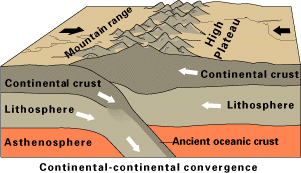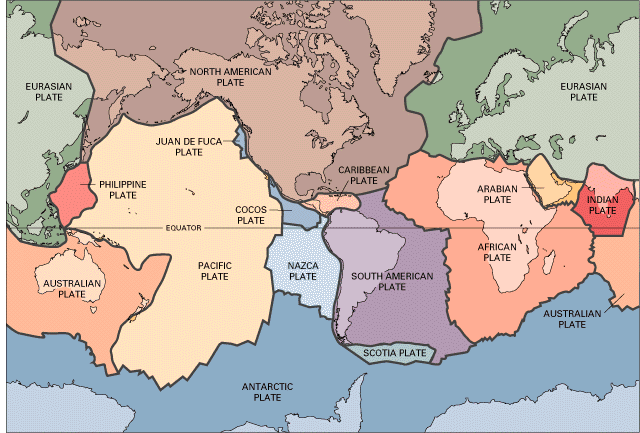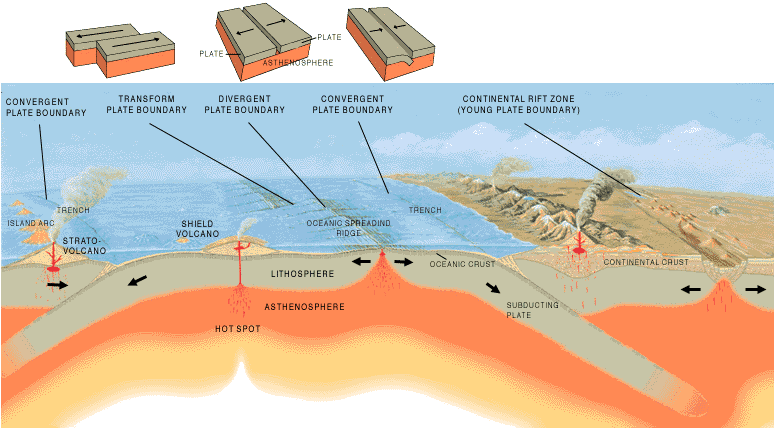Linear Mountain Chains
The existence of linear mountain chains on the Earth makes the Earth unique in the solar system. Although there is volcanism on Venus and Mars and on some of the larger moons, there is no evidence of linear mountain chains. Linear mountains suggest the movement of a plate boundary and the existence of active plate tectonics .
| The process of mountain building involved with such chains involves a convergent boundary between two plates. One of the most dramatic ranges on the Earth is the Himalayan range. There is nothing comparable to it in the remainder of the solar system. |

|
| Plate Tectonics |
References:
Ward and Brownlee
Ch 9
| HyperPhysics*****Geophysics | R Nave |

